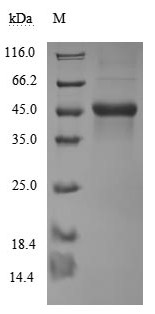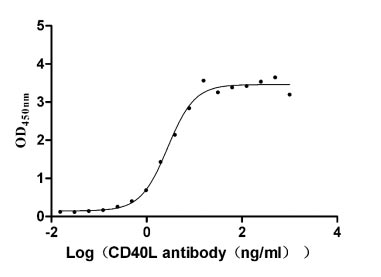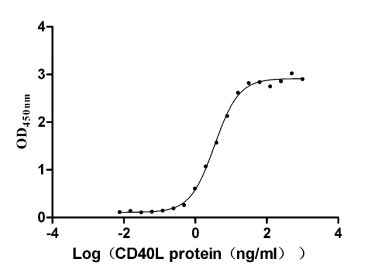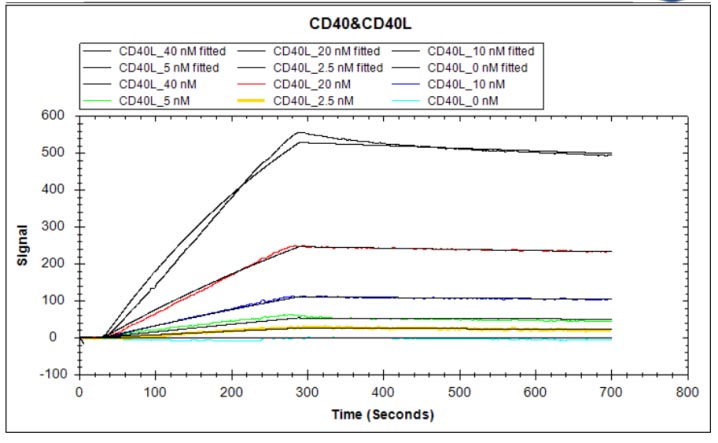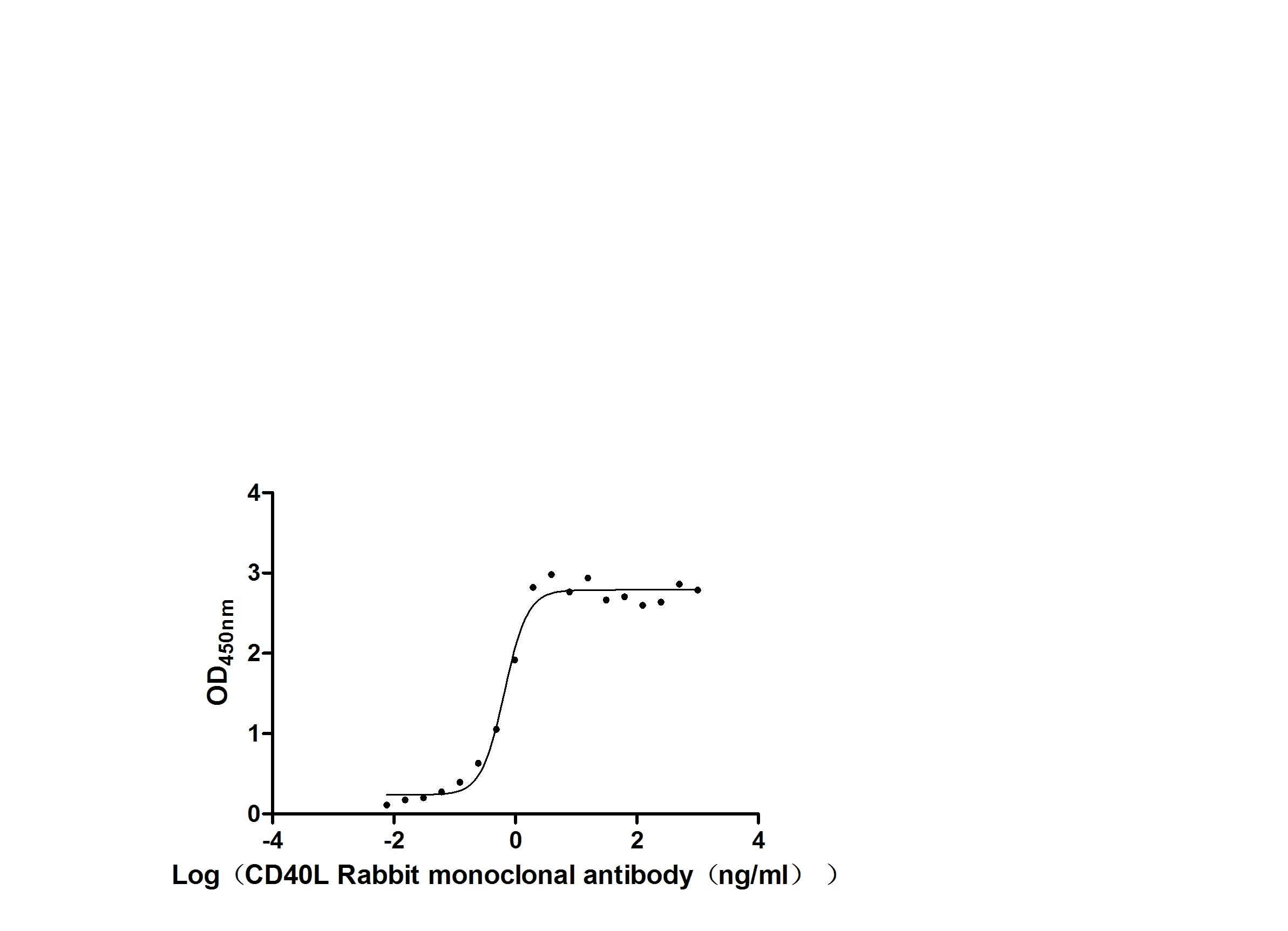Human CD40 ligand (CD40LG) amino acid Met13-Leu261, with an N-terminal hFc-Flag-tag as well as an N-terminal linker, was expressed in mammalian cells. The product is the recombinant human CD40LG protein. The SDS-PAGE analysis determined its purity greater than 90% and showed a molecular weight band of about 45 kDa on the gel. It contains low levels of endotoxin, less than 1.0 EU/ug measured by the LAL method. Functional ELISA and LSPR assay of this CD40LG protein showed that it is an active protein. This protein is in stock so that it will reach your lab bench faster.
CD40LG, also known as CD154, is a ligand for the CD40. It is preferentially expressed by activated CD4+ T cells as well as activated B cells and platelets. The interaction of CD40 and CD40LG plays an essential role in immune regulation and homeostasis. The CD40-CD40L system is also involved in the pathophysiology of several diseases, including autoimmune diseases, atherothrombosis, respiratory disease, and cancer.


